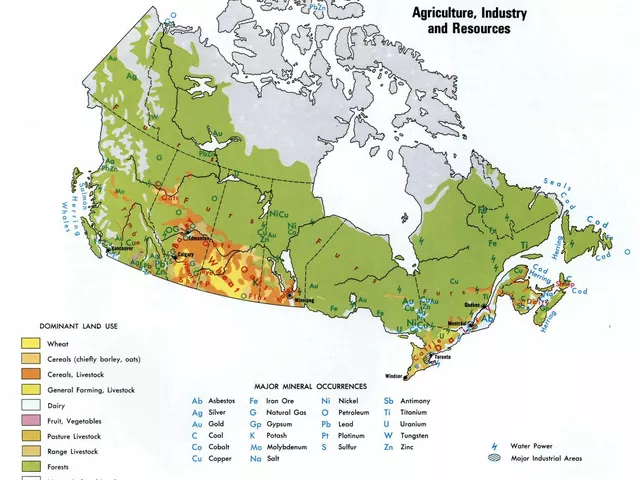Government policies have an immense impact on the development of rural areas. From funding to regulations, the government can have a great impact on how rural areas are developed and how citizens are affected. In this blog post, we will explore the role of the government in rural development and how its policies can shape the future of rural areas.
Funding for Infrastructure and Services
One of the most important roles the government plays in rural development is providing funding for infrastructure and services. This can include building roads, providing access to clean water, and investing in agricultural infrastructure. These investments can be crucial for providing basic services to rural areas and encouraging economic growth. It can also help to reduce poverty and improve living conditions in rural areas.
Regulations and Tax Incentives
In addition to direct funding, the government can also shape rural development through regulations and tax incentives. These can include regulations on land use and agricultural practices, as well as tax incentives for businesses that invest in rural areas. These policies can encourage businesses to invest in rural areas and create jobs, which can lead to increased economic activity and development.
Conclusions
Overall, the role of the government in rural development is critical. From funding to regulations, the government can have a great impact on the development of rural areas. For rural areas to be successful, it is important that the government takes a proactive role in providing support and encouraging investment. By doing so, it can help to create better living conditions and economic opportunities in rural areas.
When it comes to rural development, the role of the government is essential. Governments have a vested interest in the prosperity of all rural communities, and investing in these areas is important for the overall health of the country. Government spending on rural development can bring a variety of benefits, from job creation and economic growth to improved infrastructure and access to services. Here, we'll explore some of the advantages of government investment in rural communities.
Creating Jobs and Boosting the Economy
One of the most important benefits of government investment in rural communities is job creation. By investing in businesses, infrastructure, and services, governments can create jobs and stimulate economic growth in rural areas. In turn, this can help to reduce poverty and provide access to better opportunities for rural residents. Government programs such as agricultural subsidies can also help to create jobs and ensure that rural communities are able to access the resources they need.
Improving Infrastructure and Access to Services
Rural areas often lack access to basic services such as healthcare, education, and transportation. Government investment can help to improve infrastructure and provide access to these services, allowing rural residents to lead healthier, more productive lives. Government funding can also be used to build roads and bridges, connect rural areas to the internet, and provide access to clean water and electricity. All of these improvements can help to improve the quality of life for rural residents.
Protecting the Environment and Supporting Sustainable Development
Rural areas are often dependent on natural resources, and government investment can help to ensure that these resources are managed sustainably. Government spending can be used to conserve natural habitats, protect endangered species, and promote sustainable farming practices. These measures can help to ensure that rural communities are able to access the resources they need while also protecting the environment.
The role of the government in rural development is essential. By investing in rural communities, governments can create jobs, stimulate economic growth, improve infrastructure, and protect the environment. These investments can help to reduce poverty and provide access to better opportunities for rural residents, making them a worthwhile investment for any government.
Rural areas face a number of challenges in comparison to urban areas. These challenges include limited access to healthcare, educational, and economic opportunities. In addition, rural areas often lack access to essential services like clean water, sanitation, and reliable energy sources. These issues can have a profound impact on the quality of life of rural populations and the development of these areas.
The government has an important role to play in addressing these challenges. Government policies and programs can help to improve access to essential services, such as healthcare and education, and can also provide economic opportunities. Additionally, government initiatives can help to create infrastructure and services, such as transportation and telecommunications, that can help to improve access to resources and services.
Government intervention can also help to address some of the environmental challenges that rural areas face. For example, government initiatives can help to reduce air and water pollution, and can also help to protect biodiversity and conserve natural resources. Government policies and programs can also help to promote sustainable development practices, such as renewable energy sources, and can help to encourage the use of environmentally friendly practices.
In order to ensure that rural development is successful, it is essential that the government takes an active role in addressing the challenges that rural areas face. Government policies and programs can have a significant impact on the development of these areas and can help to improve the quality of life of rural populations.
Rural areas have long been neglected in terms of development, leading to various issues such as poverty and inadequate infrastructure. However, the government has taken steps to address these issues, introducing various programs and initiatives to improve rural living standards. In this blog section, we will take a look at how government programs are helping to improve rural living standards.
One way in which the government is helping to improve rural living standards is through investment in infrastructure. By investing in improving roads, bridges, and other transportation systems, the government is making it easier for people in rural areas to access essential services such as health care and education. In addition, the government is investing in other infrastructure projects such as clean water and electricity, which are also essential for improving living standards.
The government is also investing in programs to improve the quality of life for people in rural areas. This includes introducing policies to promote job creation and skills development, as well as providing access to agricultural technology. Such initiatives are helping to make rural areas more attractive places for people to live and work, helping to reduce poverty and create more opportunities for economic growth.
Finally, the government is investing in social welfare programs to help those living in rural areas. These programs are providing access to basic healthcare and educational services, as well as providing financial support to those in need. Such programs are helping to improve the quality of life for those living in rural areas.
In conclusion, the government is taking various steps to improve rural living standards. From investing in infrastructure to introducing policies to promote job creation and skills development, the government is doing its part to make rural areas more attractive places for people to live and work. Such initiatives are helping to reduce poverty and create more opportunities for economic growth, making a real difference in the lives of those living in rural areas.





